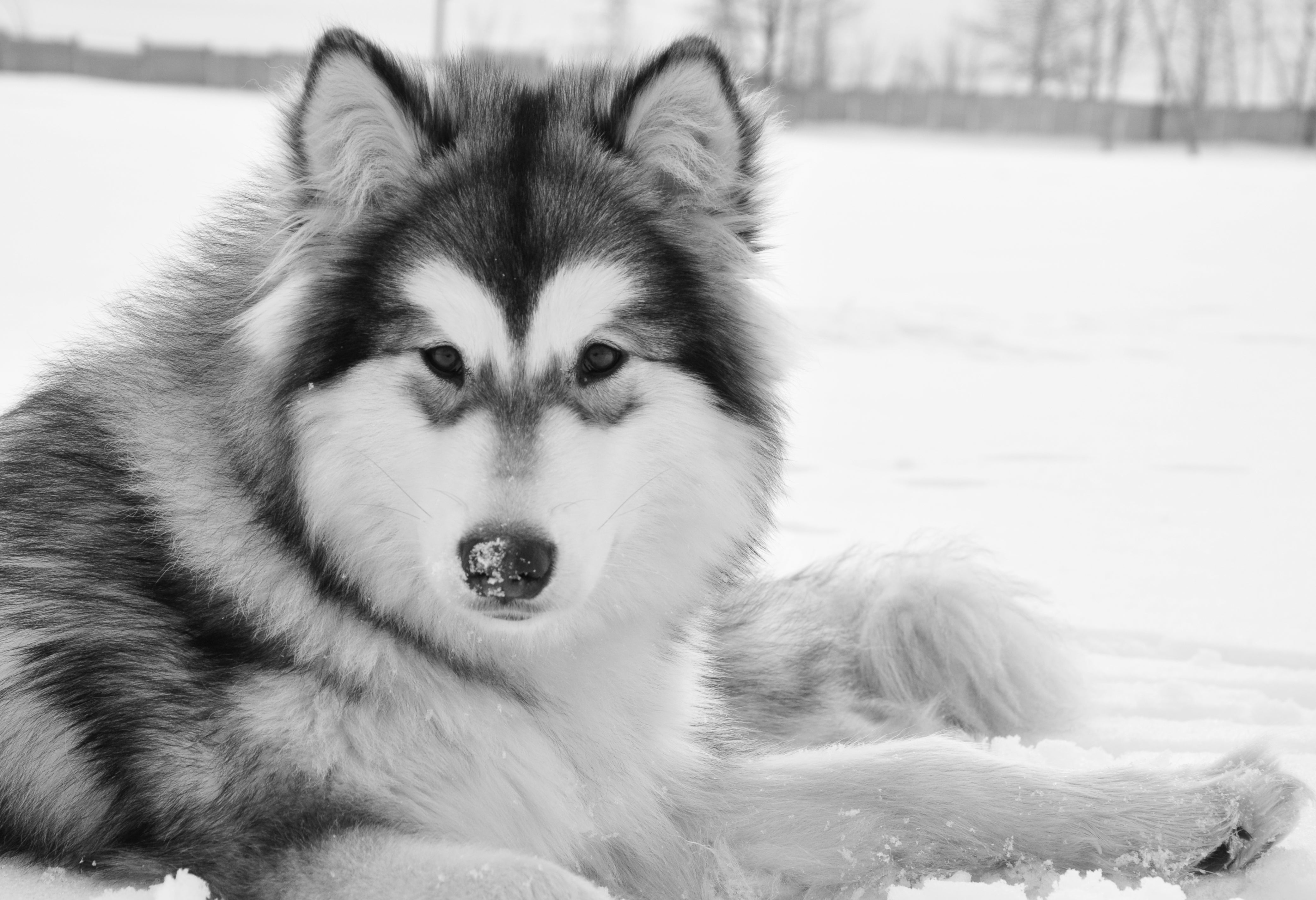Breed characteristics carousel
Learn More
Need to Know
- Dogs suitable for experienced owners
- Extra training required
- Generally healthy breed
- Enjoys vigorous walks for more than two hours a day
- Medium dog
- Some drool
- Requires grooming every other day
- Chatty and vocal dog
- Barks and alerts to visitors/anything unusual
- Could have issues with unknown dogs but gets along with known dogs
- May need additional training to live with other pets
- May need additional supervision to live with children
- Needs a large yard but can do well in more suburban areas
- Can be left alone occasionally with training
- AKC Registered Breed

Personality
Hard-working, loyal, and devoted to their pack, a Canadian Eskimo Dog does best in Arctic-like conditions. They will be playful, cheerful, and energetic when challenged properly. This dog is a specialist, working to pull up to 175 pounds over 70 miles a day if needed. They adore the cold and will want to be out in it at all hours. Things can go awry when they’re not in ideal conditions and they can become destructive, loud, and unhappy.
The Canadian Eskimo Dog remains a rare breed, even in the U.S. and Canada. It was developed by the Inuit hunters of Canada and called “Qimmig” or “Kingmik.” They were bred to work hard, pulling sleds for hunters and fending off predators like polar bears. When the Siberian Husky was introduced—and the snowmobile—the dog breed tumbled, getting down to perhaps 200 dogs somewhere around 1970.
There’s a laundry list of requirements for a Canadian Eskimo Dog to be happy: freezing cold temperatures, access to large swaths of land, someone willing to put up with Spitz-like behavior such as extreme independence. You’ll also have to bathe the dog and keep its mind active with plenty of mental exercise, especially if they are not traditionally working. You will be rewarded, though, with a fun, outgoing breed perfect for an active family located somewhere cold.
Get ready to get active: the Canadian Eskimo Dog needs two hours a day of rigorous exercise at a minimum. They will also need lots of training, problem-solving, games, and puzzles. Those living in cold conditions where sled dogs are common are best suited to meet this dog’s needs. If not, you’ll need to provide plenty of exercise during cooler hours and have lots of space for them to run free.
It’s less about a huge house and more about providing a pack for the Canadian Eskimo Dog. They love the companionship of their own breed, and multiple energetic snowballs take up space. Grab a lint roller because this is a heavy-shedding breed. Your house should have an extremely large and well-secured yard, with access to walks that offer a lot of variety for this independent and curious dog. If they are not traditionally working, it’s preferable they have access to a sporting club where they can participate in doggie activities like sledding and running.
The majestic coat of the Canadian Eskimo Dog comes with some maintenance as these are high-shedding pups. Their warm, weatherproof coats have a thick undercoat with a longer topcoat. Males have a lion-like mane around their necks and shoulders. They need brushing about twice a week, and daily when the coat sheds heavily, so be prepared to vacuum a lot.
Independent thinkers and strong-willed, this highly specialized breed blends together an agile mind and powerful body. They require training, not only to help them do the right thing but to prevent them from bad habits. They love to run and could run forever unless physically stopped, so recall should be taught, although it shouldn’t be the only training gone. They love to socialize with their pack but could do poorly around other animals or pets.
These artful Arctic pups can do well with a family if trained and exercised properly and love life with other Canadian Eskimo Dogs. However, due to the amount of shedding and the time commitment needed to have them mentally and physically fulfilled, they don’t do particularly well with families that can’t devote a lot of time to them. Small children or other pets are likely too much of a conflict of interest as far as time and energy go. They also do not like being left at home alone, even if they have walkers or are in daycare. They are super friendly and outgoing and need company, and a lonely or bored Eskimo Dog can be destructive and noisy.
The cost of a Canadian Eskimo Dog from a breeder is significantly more than the cost of adopting one from a local shelter or rescue. The adoption fee usually covers additional items such as spaying or neutering, vaccines, and microchipping.

Learn more about feeding and caring for your Canadian Eskimo Dog on Purina.
Did You Know?
- In 2015 a genetic study determined that the Canadian Eskimo Dogs, sometimes referred to as Canadian Huskies, and the Greenland dog are genetically the same. They are, however, genetically distinct from the very similar-looking Siberian Huskies, Alaskan
